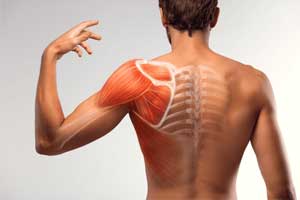- Home
- Editorial
- News
- Practice Guidelines
- Anesthesiology Guidelines
- Cancer Guidelines
- Cardiac Sciences Guidelines
- Critical Care Guidelines
- Dentistry Guidelines
- Dermatology Guidelines
- Diabetes and Endo Guidelines
- Diagnostics Guidelines
- ENT Guidelines
- Featured Practice Guidelines
- Gastroenterology Guidelines
- Geriatrics Guidelines
- Medicine Guidelines
- Nephrology Guidelines
- Neurosciences Guidelines
- Obs and Gynae Guidelines
- Ophthalmology Guidelines
- Orthopaedics Guidelines
- Paediatrics Guidelines
- Psychiatry Guidelines
- Pulmonology Guidelines
- Radiology Guidelines
- Surgery Guidelines
- Urology Guidelines
A case of severe rhabdomyolysis induced by influenza infection: BMJ

A recently published case report in BMJ Case Reports describes the case of 29-year-old man with influenza-induced rhabdomyolysis and emphasizes the need for assessment of creatinine kinase (CK) levels of patients hospitalized with influenza.
"Rhabdomyolysis is characterized by a breakdown of muscle tissue causing the release of CK, aldolase, lactate dehydrogenase, ALT and AST into the blood. Prompt recognition is critical to prevent permanent renal injury. Common causes of rhabdomyolysis include trauma, excessive exercise, medications, metabolic myopathies, electrolyte disturbances, connective tissue diseases, toxins and infections. The most common cause of virus-associated rhabdomyolysis is influenza," explain the authors.
The patient, presented with complaints of 3 days of fever, nausea, vomiting, and anorexia, had a past medical history of cerebral palsy, seizures and chronic constipation. Physical examination revealed a temperature of 38.8°C, heart rate of 167 beats per minute, blood pressure of 75/62 mm Hg, respiratory rate of 30 breaths per minute and oxygen saturation of 90% on 3 L/min of supplemental oxygen.
Laboratory findings were significant for elevated levels of lactic acid (8.6 mmol/L; normal range 0.3–1.5 mmol/L), creatinine (8.48 mg/dL; normal range 0.38–1.02 mg/dL), and total CK (3043 U/L; normal range 0–200 U/L).
The patient was diagnosed with influenza and superimposed bacterial pneumonia and was initiated on intravenous fluids (IVF), ceftriaxone, azithromycin, and oseltamivir. The following day, the patient defervesced and PCR of a nasopharyngeal specimen was negative for viral pathogens, therefore oseltamivir was discontinued.
“Creatinine decreased to <1.5 mg/dL and lactic acid normalized. However, CK increased to 16,000 U/L over the next 2 days despite aggressive hydration while serum creatinine normalized,” the study authors explained.
In the following days, the patient's health declined with recurrence of fever, tachycardia, and intractable vomiting. The patient was initiated on oseltamivir 150mg twice daily after a repeated nasopharyngeal swab was positive for influenza A, subtype H3.
The patient's CK levels continued to increase (peak: 34,176 U/L), therefore maintenance IVF was increased to 250 mL/hr. All antibiotics were discontinued after blood cultures were found to be negative. All other causes of rhabdomyolysis were excluded and the patient was diagnosed with influenza-induced rhabdomyolysis. While the exact mechanism between fever and subsequent serum CK elevation is unclear, the authors noted that it "could be due to either direct viral invasion of myocytes or due to release of viral progeny following replication."
Following supportive care and a 10-day course of oseltamivir, the patient's CK levels declined and he was discharged.
“Our case highlights the need to consider checking CK levels in hospitalized patients with influenza infection. Additionally, influenza must remain in the differential for unexplained rhabdomyolysis," concluded the study authors.
For further reference follow the link: http://dx.doi.org/10.1136/bcr-2018-226610

Disclaimer: This site is primarily intended for healthcare professionals. Any content/information on this website does not replace the advice of medical and/or health professionals and should not be construed as medical/diagnostic advice/endorsement or prescription. Use of this site is subject to our terms of use, privacy policy, advertisement policy. © 2020 Minerva Medical Treatment Pvt Ltd